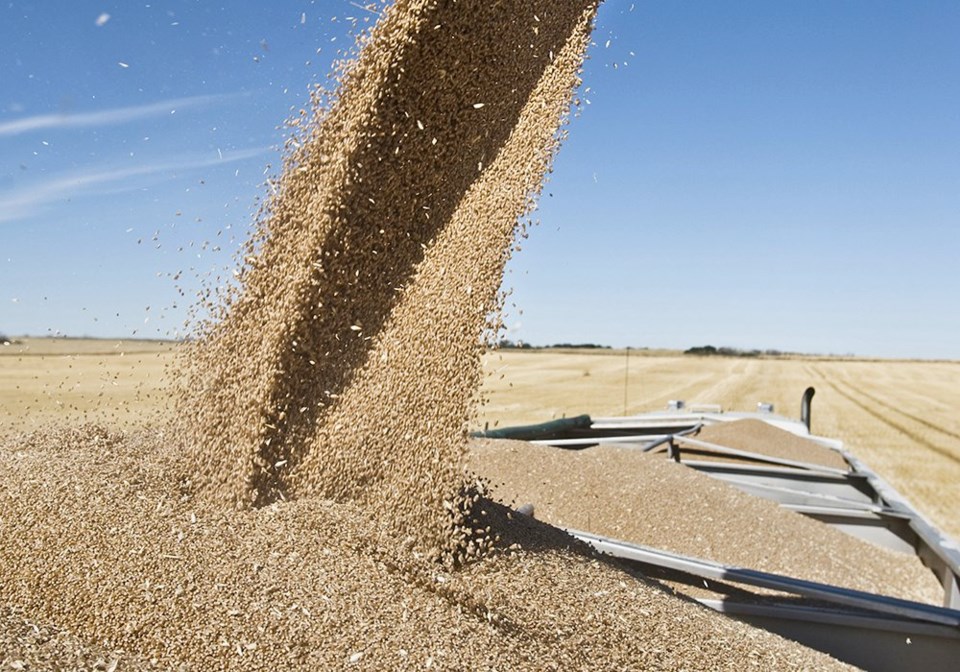CARMAN, Man. — Has the quest for gargantuan, high-performance combines reached a dead end? Or do engineers have more tricks up their computer-assisted designs to coax Mother Earth into supporting more weight?
Can engineers squeeze out more harvest performance without creating a monster machine?
I put that question to Eric Raby, president of Claas North America. Raby was attending a field day hosted by genAG at the Kehler Oak Ridge Farm west of Carman, Man.
He surmised that combines have grown just about as much as they need to grow. As farm size escalates, the new glitch in harvest logistics is the required number of grain carts with drivers, trucks with drivers, distance to the bins, dryer capacity and factors that keep the whole ballet dancing.
Combine engineers are continually upping the ante on capacity. At last count, the world’s biggest combine is the Claas Lexion 8900, with 790 horsepower, a 510-bushel tank and unload of 5.1 bushels per second. With the other companies following close behind, it’s clear that the combine is no longer a bottleneck.
The new problem with all that weight is getting stuck during a wet harvest, soil compaction during virtually all harvest conditions and increasing public ire because of road damage.
Raby said not many years ago, there was a smooth system with corn varieties, combines, carts and trucks that would spot a combine at the headland just in time to fill a truck.
“Today it’s a question of how far can I go? Can I get to the end of the road before my tank fills and I waste time waiting,” said Raby, adding that when combine companies make one improvement to enhance performance, it impacts everything down the line.
“We all said, ‘let’s run a bigger header to make those big combines more efficient.’ But then we filled the grain tank quicker. And every support system down the line also had to improve to keep up with the new head.
“Keep in mind that the bigger head is necessary because bigger combines process faster. If you can’t feed the combine fast enough, then your combine investment isn’t paying off like it should.”
He said that heavier implements require more attention to mud and compaction conditions. In Western Canada, Claas promotes the rubber track option to deal with these factors. Raby said tracks on the grain cart and tractor help deal with mud and compaction, especially now that carts have hit the point that some carry up to 2,500 bushels.
Some question whether weight will ever become such a hefty issue that combine designers turn to aluminum and poly materials.
“Building aluminum components for heavy ag implements might be considered a prohibited cost factor. But look at Ford. They’ve kept their aluminum F150 price competitive. I think we have to look at what components in a combine can be converted over to aluminum today. Things like sheet metal, but that alone won’t have much of an impact.”
Also, a combine does a lot of hard work. Much of the machine has to be cast iron or hardened steel. Plus, consider that aluminum work hardens in time when asked to perform really hard work.
Commenting on the progression of their headers, Raby said Claas introduced its line of flex headers in 2017 with a 30-foot model. Although its biggest flex head is now at 50 feet, he said the basic technology hasn’t changed.
“Ground speed is obviously a big deal in calculating performance of a combine. Anybody can drive a combine faster, but if you’re blowing grain out the back, that’s not a good practice. You want that grain in the tank.
“Transit speed is another thing we look at. During the entire harvest season, how much time is spent roading between fields? We have the highest transit speed in the industry. That means each combine spends more time in a day doing what it’s designed to do, which is harvesting grain.
“We have things like integrated trailer systems for the headers, to help operators save time. Another thing to save roading time is the fact that our combines on tracks are narrower than a machine on duals.”
Raby said the Australian portable grain bins that hold up to 10,000 bushels are slowly gaining acceptance in North America.
“They solve an immediate problem, but they’re really just kicking the can down the road,” he said.




